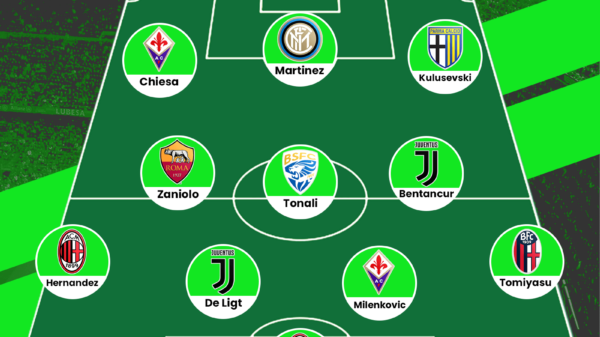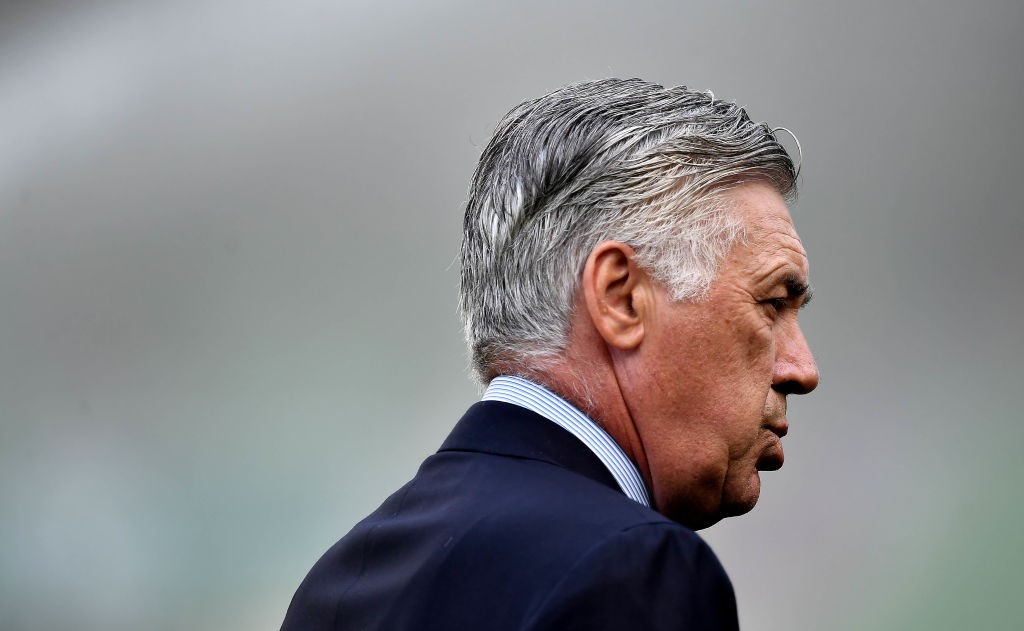
Being a football hipster is serious business with knowledge about the young starlet making waves for a non-mainstream mid table side often a prerequisite rather than a feather in the cap. To further enhance your, perhaps, burgeoning reputation as a true hipster, Outside of the Boot is on hand to provide an in-depth guide to some of the less celebrated teams around Europe. In this edition of the series, Jack Flanagan looks at Sassuolo.

THE PREVIOUS CAMPAIGN
Last year’s Serie A table will tell you many things. It will tell you that Juventus are the strongest side in the country, and have a squad that is virtually unchallenged in terms of depth and quality. It will also tell you that Napoli are their closest challengers, and that the Milan clubs have declined somewhat from their mid 00’s dominance. But if you look closely enough, it will also reveal other details. A look at 6th place reveals all, because in 6th place, a full 4 points in front of AC Milan an 7 points in front of Lazio lie Sassuolo. Sassuolo? Who on earth?
For the casual football fan, the rise of the side from Emilia-Romagna has been so dramatic and fast that it would be easy to miss. The town from which they hail (no prizes for guessing the name of this town) has a little over 40,000 inhabitants. Just like its town, the club has been off the radar for some time. Football’s answer to a dormant volcano. If Juve are Etna, Sassuolo are Ischia. The club’s stadium has a measly 4,000 capacity, and so is rendered insufficient for Serie A football. As a result, they play their football in nearby Reggio Emilia instead. Carpi are indeed in a parallel situation – but Carpi did not finish 6th in the league last season. Founded in 1920, Sassuolo only reached Serie B in 2008. Five years later, they reached Serie A – again, for the first time in their history. They managed to survive in their first campaign, finishing clear of the relegation places by a stunning 15 points. Many would wonder how they could’ve topped this last season. But they did.
We have seen the continued rise of many sides in recent years – Southampton, Leicester, Nice and so on. I’m not sure any have been as dramatic as Sassuolo’s, who have climbed 4 divisions in the Italian football ladder in a decade. There are numerous factors at play in the rise of Sassuolo – all of which are impressive. The club’s recruitment is largely domestic, and with an increasingly globalised transfer market, this is really nice to see. Even better is the fact that some of their most gifted players are not just Italian, discarded by larger clubs. The club are an example of just how far good management and clever recruitment can get you. Saluti.
As mentioned, last season was the best season in Sassuolo’s history, as they qualified for the Europa League in 6th place. Quite remarkable. The campaign featured some results which will go down in the history of the club for eternity – a 1-0 win at home to champions Juventus, a 2-0 win away to Inter at the San Siro and a 2-0 win away to Lazio at the Stadio Olimpico. They even managed to beat Inter and Lazio in the return fixture. Clearly, these results were no fluke. Only Juve, Napoli and Roma lost fewer games than Sassuolo last season. Try and digest that!
Perhaps the greatest testament to Sassuolo’s progress last season can be found through looking at their results in more detail. They really tightened up a great deal. Two seasons ago, they were shipping 3 against now relegated Hellas Verona, 3 against Empoli and a strange 7 against Inter. In all they conceded 57 goals. Compare this to last season’s 40, and you see the difference. As a result, goal difference swung a whopping 17 goals in their favour. Where do I start with the clean sheets? Lazio, Juventus, Inter, AC Milan, Bologna and Sampdoria all drew blanks against the northern side. As a result, they gained 12 more points. As Fergie once said, and I quote: “Attack wins you games, defence wins you titles”. Progress then? No doubt.
MANAGER PROFILE
Sassuolo’s story is without doubt one of the most magical of recent times. Part of the explanation for their meteoric rise lies upon coaching appointments – the man that got them promoted to Serie B was none other than Massimiliano Allegri, the same man who currently coaches Juventus and led Milan to their first Serie A title in 7 years in 2011. A flurry of managers after Allegri’s departure from Sassuolo in 2008 consolidated their position in Serie B, but the man who can be credited most with their success is Eusebio Di Francesco. And yes, he was indeed named after the finest Portuguese striker in history himself.
Currently at the helm, Di Francesco has managed the side since Summer 2012, apart from a 2-month period where he was sacked and re-hired. He has done nothing short of a remarkable job. Maybe it’s the glasses. The suit? Most likely not. But Di Francesco has worked wonders on a modest budget – their net transfer spend last season was just over £4m. This is largely because Sassuolo recruit domestically, often searching for discarded scraps from the major Italian clubs. Acerbi, Berardi and Cannavaro, for example, have all been let loose from the clutches of major clubs. Di Francesco is not just tactically astute, but he knows how to get the best out of his players, and has a great eye for talent. What more do you want from a manager?
TACTICAL APPROACH
Sassuolo’s tactics are the stuff of legend, and are exactly what draw so many football lovers to the side. Di Francesco’s men set up in a fluid 4-3-3 formation – simple but effective. With Vrsaljko’s departure to Atlético, it is looking like Gazzola will start at right back (provided they do not sign another right back), with the ever-present Peluso on the opposite flank. Acerti will partner the experienced Cannavaro (yes, that is indeed the brother of Fabio, Paolo), a partnership that looked extremely effective season as the Neroverdi tightened up from the previous campaign.
In the midfield, Magnanelli operates as the regista, with free-running Duncan and fellow attacking-midfielder Missiroli in front of him. Magnanelli’s presence allows Duncan and Missiroli the freedom to express themselves, and this is part of the reason Magnanelli is the midfield lynchpin of this trio.
Up top is where the spice is added – Berardi and Politano will occupy the flanks next season following Sansone’s departure, with Defrel acting as the number 9. This front three is extremely mobile, which in particular explains why Sansone and Berardi scored as many as Defrel last season. This makes them harder to mark, and altogether more effective. Their mobility also demonstrates their footballing intelligence, and how well they understand each other.
In all, this hyper-offensive setup works for Sassuolo for three central reasons. Firstly, they have the attacking players to justify it, and are always a threat going forward. Added to this, they have some rather defensive minded midfielders, exemplified by their love of investing their time into the development of a regista (Magnanelli, Mazzitelli, Sensi…) that understands the importance of dictating tempo and controlling the game, as well as mucking in when needed to. Therefore, Sassuolo do not have the type of midfielders who bomb forward at every opportunity (I’m looking at you, Aaron Ramsey…), and this discipline allows them to play a more offensive formation. Finally, in players like Cannavaro and Acerbi, they have players with awareness and nous at the back, further extending their discipline. A 4-3-3 formation with, for example, attack-minded wing-backs and numerous number 10-type playmakers can be disastrous since it becomes too attacking, leaving the side in question exposed on the counter. However, Sassuolo’s 4-3-3 strikes the balance between defence and attack perfectly.

TRANSFER MARKET ACTIVITY
Up until now, Sassuolo have had a busy transfer market. Both Vrsaljko and Sansone have left the Italians for La Liga, where they will be plying their trade at Atlético and Villarreal respectively. Their absence will no doubt be felt – Sansone was joint top scorer at the club last season, and with Sassuolo lacking a prolific number 9, his goals were vital in their campaign. At the tender age of 23, and with much potential, Sansone could well be an aspired signing for the Yellow Submarine.
Vrsaljko too was a first team regular last season, and after an impressive Euros, he sealed a switch to Atlético. Vrsaljko is a modern day full-back – he likes to get forward and whip crosses in, but he is a shrewd defender too, with an average of 4 clearances per game last season for the Neroverdi. His energetic displays should mean that he will fit well into Simeone’s side, as they focus on exactly that – energy. Just like Sansone, he is a big name departure.
Despite this, to say that Sassuolo’s transfer market has revolved around exits would be inaccurate. Matteo Politano has been brought in on a permanent transfer from Roma after his loan move to the Neroverdi last season, and with Sansone’s departure, Di Francesco may view him as Sansone’s successor. A big ask mind, given that Politano only started 11 games last season, and looked an inferior player to Sansone. However, his development this season could be speedier if he is given more game time.
Aside from Politano, two other notable signings have been made – Timo Letschert and Alfred Duncan. Letschert is a centre half with bags of technique – strong but excellent on the ball, and will be a welcome addition to Sassuolo’s back line, even if he doesn’t make the back four immediately. Duncan is also a good signing – another loan move made permanent by the Neroverdi, he is quick, strong and extremely hard working, and will look to build on his good first season with Sassuolo last year.
Despite these additions, I think Sassuolo could do with investing in one or two more players. They could definitely do with signing a right-back – they have brought in young Pol Lirola from Juve in this position, but a more solid option is needed, given the quality Vrsaljko has. Another attacking player would also not be a wise move – perhaps in the form of a striker or a winger, to make up for Sansone’s departure and provide competition for places up top.
THREE KEY PLAYERS
Domenico Berardi: Not much would function up top in this Sassuolo side without their star man, Domenico Berardi. Born in southern Italy, Berardi joined Sassuolo in 2012 with the club in Serie B, and has been with them ever since. Remarkably, he is just 22, but has already made 136 appearances for his club, scoring 52 goals. Quick, a brilliant set piece taker and a clinical finisher (just look at his goals/games ratio!), he is one of the hottest prospects around. Everything good about Sassuolo going forward seems to involve him one way or another.
Francesco Magnanelli: To say that Sassuolo revolve around Berardi, however, would be naïve, since football is a team game. If you were going to pick another central component of Sassuolo’s DNA, you would look no further than Francesco Magnanelli. Captain and central midfield cornerstone, also with one of the most Italian names you will ever see, Magnanelli is Sassuolo through and through. He has been at the club since 2005, back when they were in Serie C. Magnanelli is your classic regista – a deep lying playmaker with an ability to dictate tempo and unite defence and attack. An alternate Andrea Pirlo, if you will. Since most traffic runs through and at the discretion of the regista, they really are the heartbeat of the team. He made on average almost 3 interceptions per game last season, and had an average passing accuracy of 82.5%, the second highest in the side. Berardi and Magnanelli are, without question, the two first names on the team sheet.
Francesco Acerbi: Another man who is fast becoming a key component of the Neroverdi is Francesco Acerbi. Assured and confident, Acerbi has become the man they lean upon at the back, becoming an important part of an ever-improving Sassuolo back line. It looks as though he has finally found his home at the age of 28, after being discarded by Milan, Genoa and numerous other Serie A sides. The 2015-16 campaign was the most impressive of his career. Arguably Italy’s king of interceptions, Acerbi made 139 of them in Serie A last season, more than anyone. Extremely consistent, and focused during matches, he only seems to be getting better.
TALENT RADAR KEY YOUNG PLAYER
The most obvious player to keep an eye on next season is Domenico Berardi – the Neroverdi’s crown jewel, and most promising talent. Given that Berardi has been one of the best attacking players in Serie A in the last two seasons, it’s easy to forget he’s only 22. To think what he could potentially do next season is an exciting thought to entertain.
Aside from Berardi, both Letschert and Duncan, who are only 23 years of age, are exciting talents. It will be interesting to see how Letschert in particular develops in Serie A, and if he can develop the physical side of his game you could have one top ball-playing defender on your hands.
The regista development line is also looking promising for the Italian side – with Magnanelli ageing, both Stefano Sensi and Luca Mazzitelli have returned to the club after supreme loan spells in Serie B. Sensi, who moved to Sassuolo from Cesena for €5m in January 2016, played 31 times for the Serie B side last season on loan, and is almost a clone of Magnanelli. Your typical classy, ball-retaining midfielder, he could go on to make a real impact at Sassuolo in the coming seasons. Mazzitelli spent his year at Brescia, also becoming a first-team regular, and could well challenge Sensi to a starting spot in the near future. Two very classy midfielders – keep your eyes peeled!
CONCLUSION AND EXPECTATION
With the departures of Sansone and Vrsaljko, and no replacements of comparable quality yet, qualifying for a Europa League place again next season could be a very tough ask for the Neroverdi. However, nobody saw that coming anyway last season, and given what they have achieved in recent times, it wouldn’t be crazy to suggest they could do it again.
Sassuolo’s key strengths lie in their organisation, fluidity and understanding, and we have seen just how far this can get you in football in recent times. Without this, we may not have seen Costa Rica reach the World Cup quarter finals in 2014, or see Leicester win the Premier League last year. Not just this, but it is important to remember that Sassuolo are a sturdy, well-run club, with a complete absence of controversial off-the-field affairs. Their manager is trusted and loved, just like the board, and this instills confidence not only in the players, but it creates an all-round positive atmosphere around the club. Football is as much in the mind as on the pitch, so this definitely helps the club move forward. Additionally, their players are grounded and hard-working – experiencing success and recognition now perhaps, but many of them have plied their trade in the lower leagues or in reserve sides for much of their careers, giving them a unique sensibility to struggle.
With all of this in mind, the sky really is the limit for Sassuolo. Everything about the club screams success, from recruitment through to tactical approach. With a couple of signings this summer to strengthen depth, they could be a force to be reckoned with next season.
- IFK Mariehamn: From Obscurity to Finnish Champions - December 3, 2016
- Hipster Guide 2016-17: Valencia’s tactics, key players and emerging talents - August 23, 2016
- Hipster Guide 2016-17: Sassuolo’s tactics, key players and emerging talents - August 19, 2016




























































